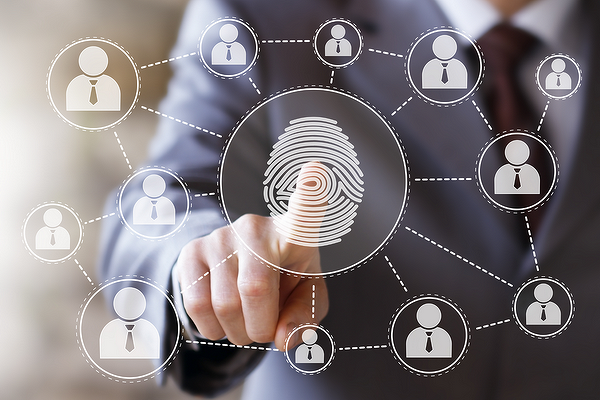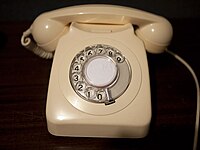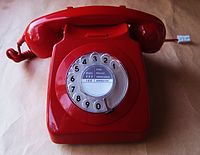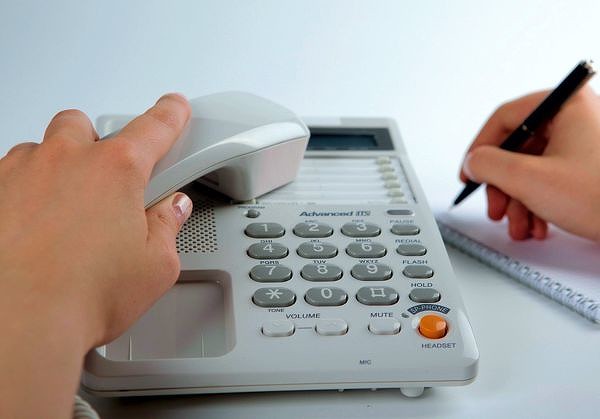- Что будет если позвонить на номер 111
- Кому принадлежит номер 111
Что будет если позвонить на номер 111
Если позвонить на номер, то у вас откроется USSD-меню, которое предложит вам выбрать необходимый пункт. Чтобы позвонить необходимо набрать комбинацию, которая начинается с *111 # и дальше продолжаем работать с другими цифрами.
Существует большое количество разных комбинаций МТС, которыми могут пользоваться только абоненты мобильного оператора. Благодаря данным USSD-кодам можно получить информацию о балансе либо узнать номер своего телефона, уточнить тариф, который подключён к данному номеру, а также можно пополнить баланс либо изменить количество услуг или подписок, которые подключены на номер телефона, а также можно перейти на другой тариф, если вас не устраивает нынешний:
- *111*2# — Эта команда поможет узнать ваши расходы с лицевого счёта.
- *111*2*5# — Вы можете узнать, каким тарифом вы пользуетесь на данный момент либо изменить тарифный план.
- *111*7# — Можете управлять счётом.
- *111*30# — Возможность подключить доверительные услуги.
- *111*0# — Отключение или подключение услуг для отдыха, а именно весёлых роликов, приколов, анекдотов и так далее.
- *111*4# — Подключение новостей, гороскопов и предложений о знакомствах.
- *111*3# — Подключение ежедневного прогноза погоды.
- *111*221# — Подключение мелодии вместо гудка.
Интересное: а звонили ли Вы когда-нибудь самому богу? Мы добавили статью о том, как дозвониться до бога напрямую!
Для подключения услуг либо использования команд вам необходимо ввести данный код и нажать на звонок. Далее вам придёт смс с информацией.
Существует ещё одно применение команды *111#. Таким образом можно вызвать USSD-меню. Для того, чтобы выбрать необходимый пункт, необходимо действовать любым из трёх способов. Для начала нужно позвонить по номеру, а затем выбираем пункт любым способом:
- Вводим номер пункта.
- Нажимаем кнопку Ok или Yes.
- Отправляем сообщение.
Информация появляется сразу же, а не приходит сообщением.
Кому принадлежит номер 111
Данный номер является мобильным сервисом мобильного оператора МТС. Благодаря этой комбинации вы сможете узнать о различных услугах или подписках, которые подключены у вас на номере. Также можно узнать различную информацию о лицевом счёте и тарифном плане. Узнать это можно с помощью различных USSD-кодов, которые будут напрямую зависеть от того, что вам необходимо. О комбинациях мы поговорим дальше.
Позвонить по номеру можно и это будет совершенно бесплатно для абонентов МТС, для других мобильных операторов недоступен звонок по данному номеру.
Сервис *111# МТС поможет вам получить всю необходимую информацию о услугах, подписках, балансе и тарифе. Всё это удобно, мобильно и моментально, что в свою очередь приносит пользователям МТС только удовольствие.
From Wikipedia, the free encyclopedia
For the single non-emergency number medical helpline in England, Scotland and Wales, see NHS 111.
111 (usually pronounced one-one-one) is the emergency telephone number in New Zealand. It was first implemented in Masterton and Carterton on 29 September 1958, and was progressively rolled out nationwide with the last exchanges converting in 1988.
About 870,000 111 calls are made every year, and the police introduced a new number (105) in 2019, to take non-urgent police calls away from the «111» service (see 105 (telephone number)).[1][2]
[3]
[4]
History[edit]
Introduction[edit]
Before the introduction of 111, access to emergency services was complicated. For the quarter of New Zealand’s then 414,000 telephone subscribers still on manual telephone exchange|exchanges, one would simply pick up the telephone and ask the answering operator for the police, ambulance, or fire service by name. However, the problem on manual exchanges was that calls were answered first-come-first-served, which meant on busy exchanges, emergency calls could be delayed. For automatic exchanges, one would need to know the local police, ambulance or fire service’s telephone number, or look it up in the telephone directory, or dial the toll operator and ask them to place the call. The problem was that the numbers were different for each exchange, and again, there was no way to tell emergency calls apart from regular calls. Auckland, for example, had 40 telephone exchanges, and the telephone directory had 500 pages to search through to find the right number,[5][6] although the separate emergency numbers for fire, police and ambulance in the main service area (e.g. Auckland, but not for not minor exchanges) were listed in bold on the first page.
Following the 1947 Ballantynes fire in Christchurch, fire officer Arthur Varley was recruited from the UK to bring about a reform of the fire service. Familiar with Britain’s 999 system, he campaigned for the setting up of a universal emergency telephone number across the country. In mid-1957, a committee was set up to institute a common emergency number across New Zealand, consisting of the Post and Telegraph Department, the Police, the Health Department, and the Fire Service. In early 1958, the Postmaster General approved the provision of the service using the number 111.[6]
A New Zealand rotary dial telephone (top) and a British rotary dial telephone (bottom). Note the 1 on the New Zealand phone is in the same position as the 9 on the British phone.
111 was specifically chosen to be similar to Britain’s 999 service. With pulse dialling, New Zealand telephones pulse in reverse to the UK — dialling 0 sent ten pulses, 1 sent nine, 2 sent eight, 3 sent seven, etc. in New Zealand, while in the UK, dialling 1 sent one pulse, 2 sent two, etc. In the early years of 111, the telephone equipment was based on British Post Office equipment, except for this unusual orientation. Therefore, dialling 111 on a New Zealand telephone sent three sets of nine pulses to the exchange, exactly the same as the UK’s 999.[7] Number «9» in New Zealand (or «1» in Britain) was not used for the start of telephone numbers because of the likelihood of accidental false calls from open-wire lines tapping together, etc.
The telephone exchange in Masterton was replaced in 1956, and was the first exchange to have the technology installed for the 111 service. Hence, Masterton and nearby Carterton were the first towns in the country to get the new service.[6]
The 111 service began on 29 September 1958 in the two towns. When a subscriber dialled 111 at either exchange, the call was routed by the automatic exchange onto one of three dedicated lines to the toll switchboard at the Masterton exchange (although the exchange connected calls automatically, long-distance (toll) calls still had to be connected manually through an operator). A red light glowed on the switchboard panel, and another red light would glow on top of the switchboard. Two hooters also sounded, one in the exchange and the other in the building passage. The first operator to plug into the line took the call, and a supervisor would plug into the line to help if the situation became difficult.[7]
Dedicated lines connected the toll switchboard to the Masterton police station, fire brigade, and the hospital, where they were connected to a special red telephone. The line connected to the fire station, when it rang, also sounded the station alarm bells. A similar arrangement was employed at the police station, while at the hospital the call went to the local switchboard where it was identified by a red light and a distinctive bell.[7]
Among the first 111 calls was a call for an ambulance after an accident at a sawmill, and call to the fire service after a rubbish tip fire in Carterton. The first hoax call also occurred on the first day – a caller dialled 111 to ask for the address of a Carterton hotel.[7]
Expansion[edit]
After the introduction of 111 in Masterton and Carterton, the service soon expanded to most major towns and cities, including from 1961 the main centres like Wellington, where the multi-exchange area included some pre-war Rotary exchanges.
By the mid-1980s all but a few rural exchanges had the service, and by 1988, 111 was available on every exchange in mainland New Zealand.
The dates of installation in some major towns and cities were:-
| Auckland | 1968 |
| Christchurch | 28 August 1964[8] |
| Dunedin | 1966 |
| Gisborne | 20 April 1959[9] |
| Hamilton | 1960 |
| Invercargill | 1960 |
| Napier | 1960 |
| Nelson | 1960 |
| New Plymouth | 1961 |
| Palmerston North | 1961 |
| Timaru | 1960 |
| Wanganui | 1960 |
| Wellington | 1961 |
| Whangarei | 1962 |
Controversy[edit]
In New Zealand in 2004, the police answering of emergency telephone service came under sustained scrutiny for systemic problems.
A case that caused particular concern was the disappearance of Iraena Asher, who vanished in October 2004 after she rang the police in distress and was instead sent a taxi that went to the wrong address.[10][11]
On 11 May 2005 a severely critical independent report into the Police Communications Centres was released. It expressed ongoing concerns for public safety, and identified inadequate management, poor leadership, inadequate training, understaffing, underutilised technology and a lack of customer focus as being underlying risks for systemic failures. The report made over 60 recommendations for improvement, including recommending a 15 to 20 year strategy to move away from using 111 as an emergency telephone number because of problems with misdialling due to the repeated digits.[12][13]
Despite ambiguous reporting, these issues were never with the 111 service itself, and did not impact fire or ambulance services. The problems were restricted solely to the Police Communications Centres.
Contacting 111[edit]
Mobile networks will treat a 111 call as the highest priority, disconnecting another call if necessary to allow it to go through.[14] If the mobile network your phone is connected to has limited or no coverage where you’re calling from, an attempt will automatically be made to access another mobile network to ensure the call is connected.
Upon dialling 111, the caller will first hear a recorded message: «You have dialed 111 emergency; your call is being connected.» This message was added in 2008 to allow people who have accidentally dialled 111 to hang up straight away.[15] The Spark 111 emergency operator will then answer: «This is the 111 operator, do you need the fire, the ambulance, or the police?». The operator will then connect the caller to the required service: «I’m connecting you to the [service] now, please stay on the line with me.» The Spark 111 emergency operator will remain connected with the caller until the specific service’s communications centre has answered, and two way communication has been confirmed.
Emergency calls for some other services also use 111, but are still connected to one of the three services. For example, search and rescue or civil defence emergencies are connected to police. Gas leaks and hazardous substance emergencies are connected to the fire service.
In the interest of international compatibility, calls to foreign emergency numbers (112, 911,[16] 999 etc.), will be automatically diverted to 111. On average, 48% of calls to 111 are non-genuine. Over time, several measures have been introduced to attempt to reduce the number of non-genuine calls, such as the recorded message played to callers as soon as they dial 111 and charging for non-genuine calls made from landlines.[15]
In May 2017, New Zealand introduced the Emergency Caller Location Information (ECLI) Service for providing the location of 111 mobile callers.[17] ECLI has two sources of location:
- Advanced Mobile Location (both Google’s Android Emergency Location Service, and since March 2018 Apple’s AML for iOS[18]); and
- Network based location to provide a mobile callers probable location using statistical analysis to derive the callers probable location based on the cell tower connecting the emergency call (this is not triangulation as triangulation requires multiple cell towers which is not the norm for rural areas) with an accuracy of 1+ kilometer;
Depending on a number of environmental conditions the location provided can be as precise as 4 meters using the GNSS capabilities of a smartphone. All location data is only to be held for 60 minutes and is then deleted to comply with the regulated conditions of use[19] of ECLI as set by the NZ Privacy Commissioner.[20]
Other New Zealand emergency and related numbers[edit]
Other than 111, the following national emergency and related numbers are used for different services:-
- 105: police single non-emergency number; introduced in 2019 for non-emergency calls to the police.[21]
- *555: traffic incidents (dialable from mobile phones only)
- 0508-82-88-65: non-emergency Suicide Crisis Helpline (111 is used for immediate danger)
- 0800-16-16-10: deaf emergency fax (connects to police)
- 0800-16-16-16: deaf emergency textphone/TTY (connects to police)
- 0800-76-47-66: poisons and hazardous chemicals emergency
- 0800-61-11-16: non-emergency medical advice («Healthline», run by Ministry of Health)
- 0800-808-400: railway emergencies (KiwiRail Network)
- 0800-50-11-22: Military Police (NZDF Military Police)
Other emergency numbers vary from area to area, or from service provider to service provider. These numbers can be found under the «Emergency Information» section on pages 2 and 3 of the local White Pages telephone directory.
International usage of 111[edit]
- In South Korea, 111 is a special telephone number for accessing National Intelligence Service[22] to report crimes that threaten national security.
- In England, Wales and Scotland, 111 is a non-emergency medical helpline provided by the National Health Service.
See also[edit]
- 105 (telephone number), the non-emergency telephone number
- Emergency telephone
- In Case of Emergency (ICE) entry in mobile phone
References[edit]
- ^ «New Zealand emergency operators fielded a number of bizarre 111 calls in 2017». Stuff (Fairfax). 15 January 2018.
- ^ «Backyard banter Police launch 105 nonemergency call number». Stuff (Fairfax). 28 May 2019.
- ^ «In a nonemergency call 105 Police launch new number for crimes that pose no immediate danger». Stuff (Fairfax). 10 May 2019.
- ^ «More than 20000 emergency calls disconnected before police can answer». Stuff (Fairfax). 6 July 2019.
- ^ «Before 111 — 50-year history of 111 — 111.govt.nz». Archived from the original on 2009-10-24. Retrieved 2009-09-25.
- ^ a b c «Planning 111 — 50-year history of 111 — 111.govt.nz». Archived from the original on 24 October 2009. Retrieved 2009-09-25.
- ^ a b c d «The start of 111 — 50-year history of 111 — 111.govt.nz». Archived from the original on 24 October 2009. Retrieved 2009-09-25.
- ^ «111 Call From Tomorrow Night». The Press. p. 1.
- ^ «GISBORNE GETS «111» SYSTEM». The Press. 22 April 1959. p. 11.
- ^ ONE News/Reuters (8 May 2008). «Fifty years of dialling 111 in NZ». TVNZ. Retrieved 15 February 2012.
- ^ «Tables turned for 111 callers». Stuff.co.nz. 26 March 2008. Retrieved 15 February 2012.
- ^ Herald Online staff (11 May 2005). «Review triggers 111 overhaul». New Zealand Herald. Retrieved 15 February 2012.
- ^ Communications Centres Service Centre Independent External Review Final Report — New Zealand Police
- ^ «111 Vodafone Help». Archived from the original on 2019-07-08. Retrieved 2013-06-18.
- ^ a b «Spark’s part in providing 111 services». Retrieved 18 January 2017.
- ^ «Dialling 911 instead of 111 still does the trick». Stuff. 30 May 2013. Retrieved 2018-07-26.
- ^ «New caller location system for mobile 111 calls». The Beehive. Retrieved 2018-04-07.
- ^ «111 mobile caller location extended to iOS | Ministry of Business, Innovation and Employment». www.mbie.govt.nz. Archived from the original on 2018-04-08. Retrieved 2018-04-07.
- ^ Edwards, John (26 January 2017). «Telecommunications Information Privacy Code 2003 Amendment No 5» (PDF). Office of the Privacy Commissioner. Archived from the original (PDF) on 5 March 2022. Retrieved 8 May 2022.
- ^ «A call to 111 will now automatically locate you».
- ^ «105 and non-emergency contact». New Zealand Police. 2019.
- ^ National Intelligence Service (in Korean) Archived 2005-09-10 at the Library of Congress Web Archives
External links[edit]
- «111 Service». New Zealand Police. 2020.
- Official 111 website Archived 2013-02-17 at the Wayback Machine
- NZ Police simulated 111 calls
14 Января 2021 09:36
14 Янв 2021 09:36
|
В России вводят новые короткие телефонные номера для связи с госслужбами. Полный список
Минцифры распорядилось выделить ряд новых коротких номеров в диапазоне 110-122 для быстрого доступа граждан к государственным информационно-справочным и социальным службам. Приказом ведомства также выведены из резерва коды 982 и 987 для мобильной связи.
Новые короткие номера
Российская система и план нумерации, определяющая структуру цифровых, буквенных и символьных обозначений (или их комбинации) телефонных номеров, дополнена списком новых коротких номеров. Соответствующий приказ Минцифры России №425, утвержденный 12 января 2021 г. главой ведомства Максутом Шадаевым, опубликован на официальном портале правовой информации pravo.gov.ru и отправлен на госрегистрацию в Минюст России.
Новым приказом вносятся изменения в российскую систему и план нумерации, утвержденные приказом Минкомсвязи №205 «Об утверждении и введении в действие российской системы и плана нумерации» от 25 апреля 2017 г., и в ряд других документов министерства.
Документ закрепляет ряд новых коротких номеров в диапазоне 110-122 за определенными государственными службами информационно-справочного и социального характера.
В дополнение, новым приказом Минцифры также распорядилось выделить из резерва коды 982 и 987 для сотовых сетей («сетей подвижной радиотелефонной связи»).
Информационные и социальные
Согласно новому приказу Минцифры, в обновленной редакции российской системы и плана нумерации короткий номер «110» отныне закреплен за информационно-справочной службой администрации субъекта России. Номера в формате «111х(х)» выделены для звонков в информационно-справочную службу и/или службу социального назначения администрации субъекта России.
Минцифры расширило список коротких номеров российской системы и плана нумерации
Информационно-справочные службы администрации муниципальных образований будут использовать номер «113», а муниципальные информационно—справочные службы социального назначения – номер «114х(х)».
За линиями доступа к единой службе поддержки граждан для консультаций при получении государственных и муниципальных услуг в электронном виде по-прежнему закреплен единый номер «115». Телефонные линии «Ребенок в опасности» буду использовать единые номера «121» и «123».
Что такое многофакторная аутентификация MFA, варианты реализации и критерии выбора решения
Маркет

Полный список коротких номеров российской системы и плана нумерации
| Номера | Назначение номеров |
|---|---|
| 100 -109 | Диапазон для 3-значных номеров служб федерального значения |
| 100 | Служба точного времени |
| 101 | Служба пожарной охраны и реагирования в чрезвычайных ситуациях |
| 102 | Полиция |
| 103 | Служба скорой медицинской помощи |
| 104 | Аварийная служба газовой сети |
| 105-109 | Резерв |
| 110-119 | Hомepa информационно-справочных служб и служб социального назначения |
| 110 | Информационно-справочная служба администрации субъекта Российской Федерации |
| 111х(х) | Информационно-справочная служба, служба социального назначения субъекта Российской Федерации |
| 112 | Единый номер вызова экстренных оперативных служб |
| 113 | Информационно-справочная служба администрации муниципального образования |
| 114х(х) | Информационно-справочная служба, служба социального назначения муниципального образования |
| 115 | Единая служба поддержки граждан для консультаций при получении государственных и муниципальных услуг в электронном виде |
| 116хх | Блокировка электронных платежных карт |
| 117 | Резерв |
| 118хх | Номер доступа к информационно-справочным системам оператора местной телефонной связи |
| 119 | Резерв |
| 120-129 | Номера для служб социального назначения |
| 120 | Служба помощи наркоманам |
| 121 | Ребенок в опасности |
| 122 | Единая региональная информационно-справочная служба |
| 123 | Ребенок в опасности |
| 124 | Телефон доверия для детей, подростков и их родителей |
| 125 | Централизованное бюро ремонта телефонов и таксофонов |
| 126 | Служба приема телеграмм по телефону |
| 127 | Служба ГИБДД |
| 128 | Телефон доверия |
| 129 | Служба психологической помощи |
| 130х-139х | Номера информационно-справочных и аварийных служб |
| 130х | Справочно-информационная служба о лекарственных препаратах и медицинских услугах |
| 131х | Служба погоды |
| 132х | СПАС — дорожно-аварийная служба |
| 133х | Служба такси |
| 134х | Аварийная служба водоканала |
| 135х | Аварийная служба электросети |
| 136х | Аварийная служба теплосети |
| 137х | Заказ гостиницы |
| 138-139 | Резерв |
| 140х-179х | Номера платных информационно-справочных и заказных служб |
| 181, 182 | Номер телефонистов ВРМ |
| 183-189 | Резерв |
| 190-199 | Номера для доступа к услугам связи по передаче данных и к телематическим услугам связи |
Единая региональная информационно-справочная служба получила короткий номер «122», который в настоящее время закреплен за горячей линией по вопросам коронавирусной инфекции.
Телефонная линия «Телефон доверия для детей, подростков и их родителей» получила единый номер «124», который был выведен из резерва российской системы и плана нумерации в мае 2020 г.
В предыдущей редакции документа короткие номера в диапазоне «110-119» фигурировали как «номера служб, вводимых в Российской Федерации в целях гармонизации с европейским законодательством в области связи». Из этой линейки коротких номеров пока что в резерве остались коды «117» и «119».
- Может ли российский BI заменить западные платформы? Докладчики ViRush 2022 готовы рассказать вам о своем опыте.
У каждого сотового оператора есть сервисный номер, с которого он делает рассылку сообщений своим абонентам. Обычно он представляет простой, легкий для запоминания набор 3-4 цифр. У МТС это 111. Примечательно, что такая же комбинация входит в большинство USSD-команд этого сотового оператора. Обычно смс с номера 111 приходит в ответ на запрос абонента. Информация, содержащаяся в таком сообщении, зависит от того, какую команду до этого отправил пользователь.
Смс от МТС с номера 111 могут приходить и без предварительного запроса со стороны абонента. В этом случае инициатором рассылки выступает сотовый оператор МТС. Таким способом он доводит важную информацию до своих клиентов.
Назначение смс с номера 111
Номер 111 МТС использует для сервисного обслуживания клиентов. Из сообщений, отправленных с него, абонент может узнать всю ключевую информацию по счету и действующему тарифу. В число таких сведений входят:
- баланс счета;
- подключенный тариф;
- активные подписки;
- детализация расходов и пр.
Никакой платы за смс с номера 111 не предусмотрено. Кроме того через него можно подключить платные дополнительные опции (например, «гудок», прогноз погоды, гороскоп, новости, знакомства и пр.).
Что будет, если позвонить по номеру 111?
Абоненты МТС могут позвонить по номеру 111. В этом случае произойдет соединение с мобильным помощником. Далее, выбирая нужные команды-цифры, можно выяснить остаток по счету.
Дозвониться на 111 могут только абоненты МТС. Соединение с помощником-ботом бесплатное. Клиентам других сотовых операторов такой звонок недоступен.
Ждал, ждал этот вопрос. Вы четко перебрали все комбинации с 2-ками, 5-ками… и т.л.
НЕ буду лукавить:
С 2002 года находился в дружеских отношениях с товарищами из сотовой. И когда стали раздавать сотовые номера, а они были непривычно длинные (8-9******) , на мой вопрос, » а можно ли как то укоротить и вообще сделать номер по проще?», попросил сделать мне номер «111» и мне пошли на встречу — сделали номер «111» (без всяких доп. символов, набираешь 111 и я на связи) и он работал. Компании, связанные с такси постоянно выпрашивали этот номер.
Представляете еще где-то лет 5 назад набрав этот не хитрый номер, я бы реально ответил «Да, слушаю», а сейчас вам барышня ответит, что такой «Номер не существует», а правильнее было бы сказать, что такой «номер существовал, но увы…»
Удобно было «свой номер давать», но были и минусы: частенько набирали ошибочно (в кармане) незнакомые абоненты. Потом меня вежливо попросили вернуть номер обратно и мне ничего не оставалось как отдать. Отдать пришлось, т.к. за непродолжительное время работы номера руководство и работники компании поменялись. Жаль.




